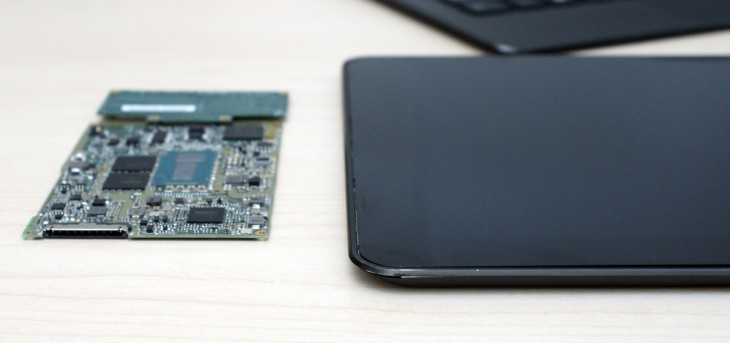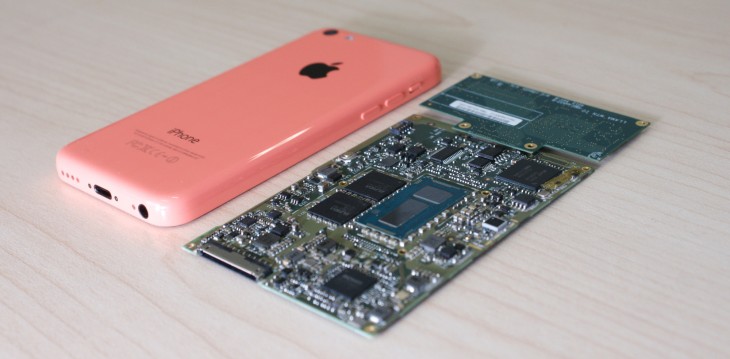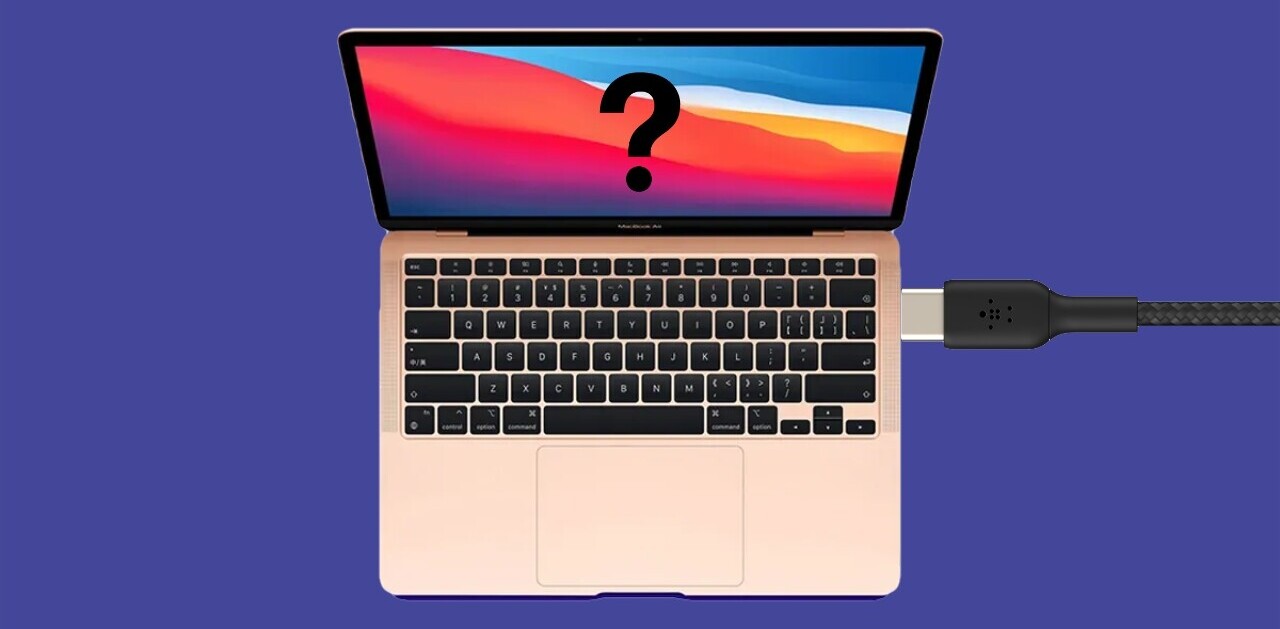
Intel has a long history of presenting reference designs to the public and OEMs as a means to show off new technology. Today’s Llama Mountain prototype presented at Computex is an ultra-thin Windows 8.1 computer shoved into a tablet.
The Llama Mountain design is a Broadwell-based two-in-one prototype that contains an incredibly thin motherboard with a sisterboard that contains storage and a Wi-Fi radio. The team decided to make the boards single-sided to go very thin. “This is by far the smallest full motherboard that exists in the world,” says director of marketing for the PC Client Solution division, Gary Richman.
Because of the small size of the motherboard, the 12.5-inch tablet can house more batteries. The board is flanked by two batteries that give the device 32 hours of battery life. The tablet without the keyboard is 670 grams and is 7.2mm thick. It’s thinner than an iPad Air but running Windows 8.1 Pro.
The motherboard and sisterboard face opposite directions to help displace heat to the front and back of the device. Which is helpful because the device has no fans. Adaptive performance also keeps the temperature down. Depending on the tablet’s orientation (either on a tablet or in the dock), the Broadwell chip adjusts its performance. “We can make the system smart so that it knows its environment and we can cool it in certain ways so you can run it at higher performance,” says Richman.
Because of the small footprint of the motherboard, it’s easy to see the Broadwell-based system being shoved into form factors like set-top boxes, tablets, TVs and thin computers that need to be placed into tight quarters. Like former reference designs from Intel, the Llama Mountain two-in-one is a device used to showcase an Intel innovation.
Intel won’t be selling the Llama Mountain prototype. It wants to show its customers (OEMs) what’s possible and give them a technological reference point to use to create their own devices. For example, the prototype’s keyboard dock uses electromagnets that were introduced last year. Intel says one unnamed OEM has already committed to introducing the technology into an upcoming product.
It’s all meant to help sell silicon. But it’s also meant to push Intel and its partners’ innovation forward. Today’s ultra-thin Windows 8.1 tablet is tomorrow’s line of thin, powerful notebooks and tablets.
Get the TNW newsletter
Get the most important tech news in your inbox each week.






